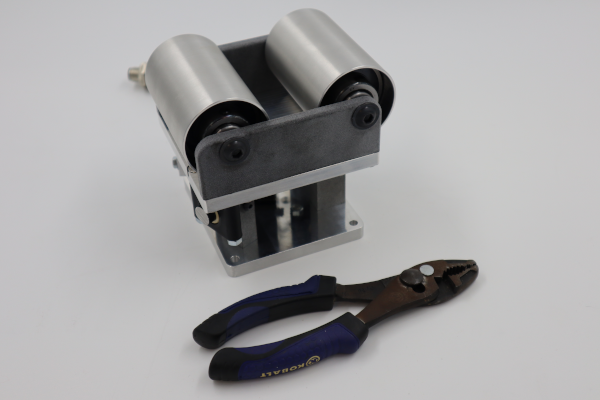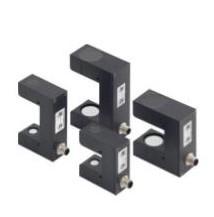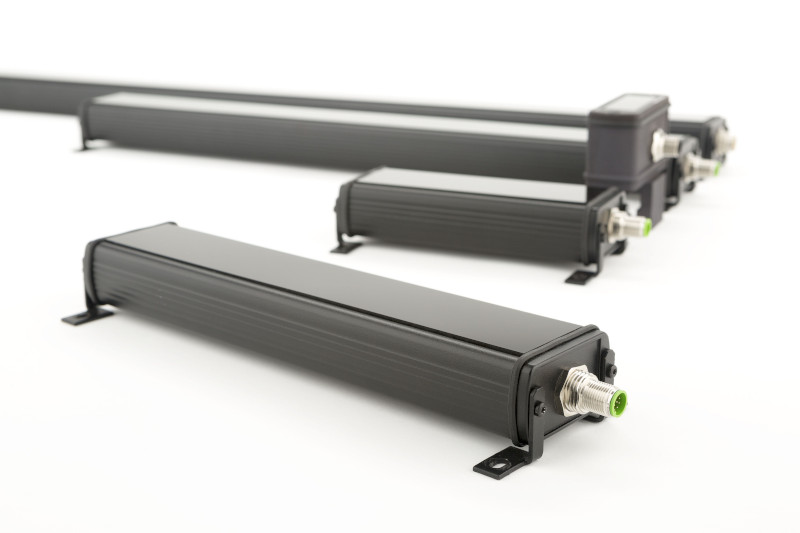Converting applications will typically require some type of guiding. It can be in the form of terminal or intermediate web guides, each with the peculiar conditions required to provide an effective placement of the web guide. However, all these applications are used in environments subject to atmospheric conditions. One of the most challenging web guiding applications deals with vacuum web guiding.
Where is vacuum used in converting?
There is a process in converting called vacuum coating. This process applies a very thin and steady layer of coating to the surface of a film or substrate. The coating will protect the film as it is handled through other converting processes. These coatings will range in thicknesses from 0.25 to 10 microns. The coating can be achieved through Physical Vapor Deposition (PVD), Sputtering, Cathodic Arc, or Atomic Layer Deposition.
The use of roll to roll converting in vacuum deposition chambers allows for more material to be treated or converted instead of working on small individual pieces. The implication of this technique is the placement of the web guide inside the vacuum chamber. Mechanism, rollers, sensor and actuator have to fit inside this limited space volume with additional environmental conditions caused by the vacuum.
What's different in vacuum web guiding?
For the purposes of web guiding, vacuum presents very interesting challenges due to environmental conditions and space limitations that come with vacuum coating. In vacuum you are faced with an environment with no air, no possible heat dissipation or outgassing. Vacuum can only be maintained in a special vessel. These types of vessels are expensive so you are faced with reduced volume or space. This also limits span lengths for web guiding and the number of rollers that can be used in the constricted space.

How sensors are affected
The lack of air or gas affects pneumatic, ultrasonic and infrared sensors in different ways. Pneumatic sensors need air flow from the emitter to the receiver to operate. Under vacuum, airflow is not possible. Ultrasonic sensors need air or gas for sound propagation. So, under a condition of vacuum sound propagation will not occur. Infrared sensors can work in vacuum as the infrared light can travel in vacuum. However, the fork style sensors are not capable of detecting transparent materials, such as clear films. This is due to the sensing principle of blocking.
A space devoid of gas or air also adds constraints such as heat dissipation and outgassing. Because there is no heat dissipation, then the heat generation from the sensor, and also the actuator, should be low. Additionally, the process of vacuum deposition requires that no other materials contact the surface of the film, so outgassing from sensors and actuators needs to be avoided completely. Outgassing will cause contamination of the deposition.
Sensor space limitation
Fork style sensors occupy a good amount of space because of the two opposing arms. This limits how close the sensor can be placed to the exit of the web guide or in any space constricted space. As mentioned before, space is an expensive commodity in vacuum deposition converting.

A sensor that works in vacuum
Our sensors are light emitting sensors with single dimension cameras as receiver. However, the sensing principle is based on light scattering, not on blocking. Because of this principle, the Roll-2-Roll Sensors are capable of working with all materials, as all materials scatter light. Sensors based on the blocking principle have issues in detecting a transparent material, because transparent materials block very little if any light.
The design also allows for less space usage than the typical fork style sensor. With a low profile single sided design, our sensors fit in spaces where most sensors will not.

We can help with your web guiding in vacuum application
Our sensor and web guiding technology provides you with a solution to guiding in vacuum conditions. We have provided some customers with our technology for their applications with successful results. If you are wondering about how to keep your web inline within a vacuum process you need to contact us.
